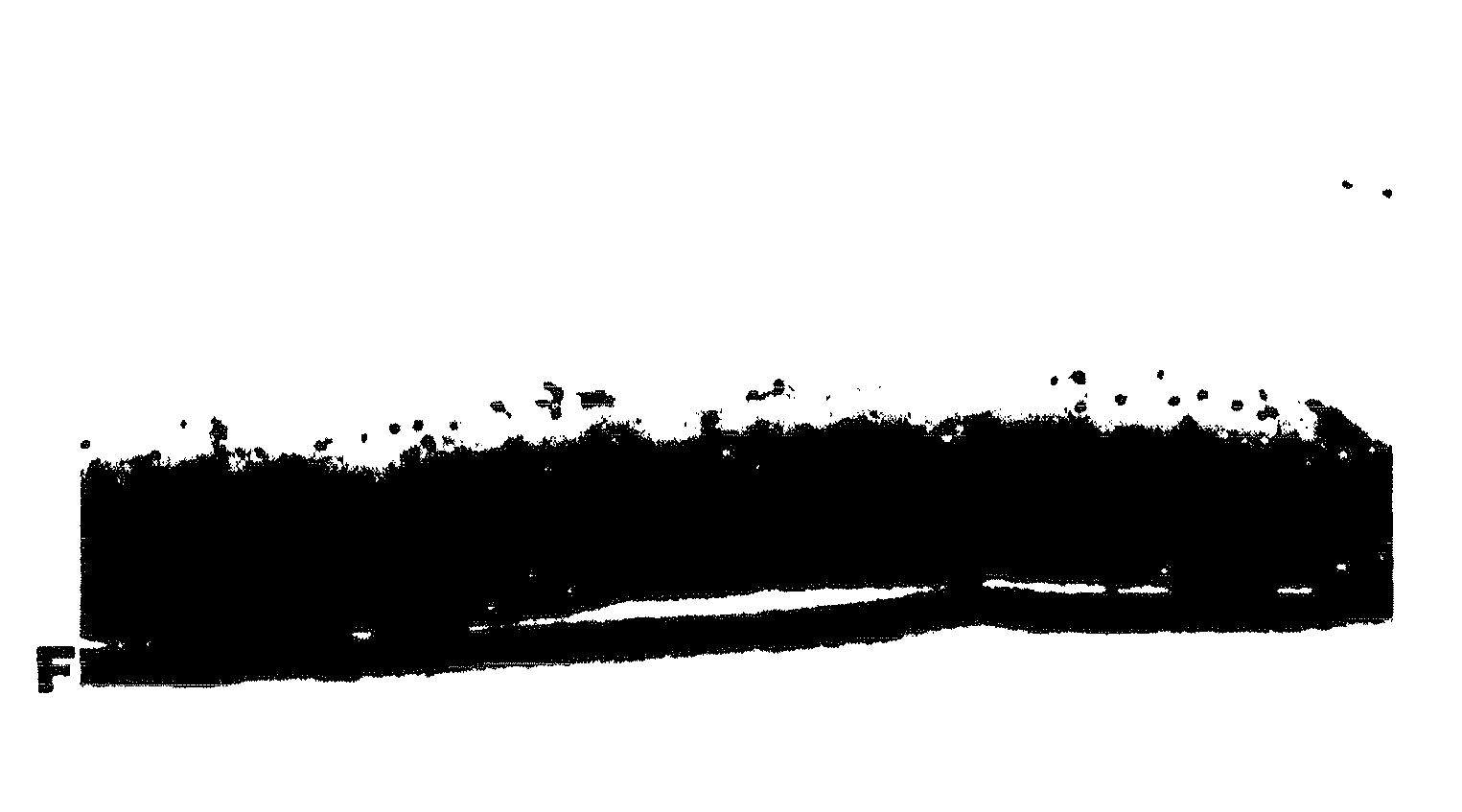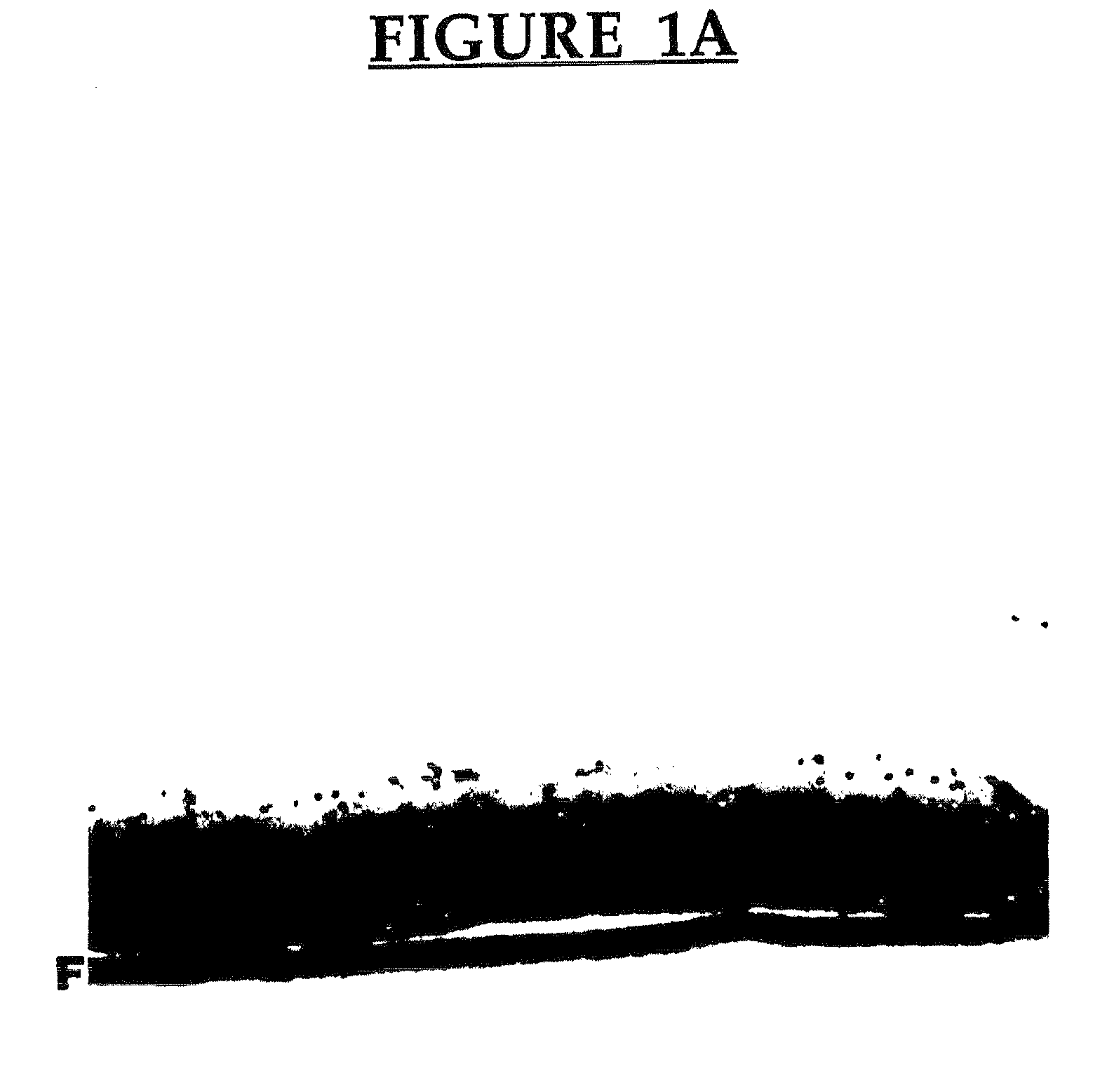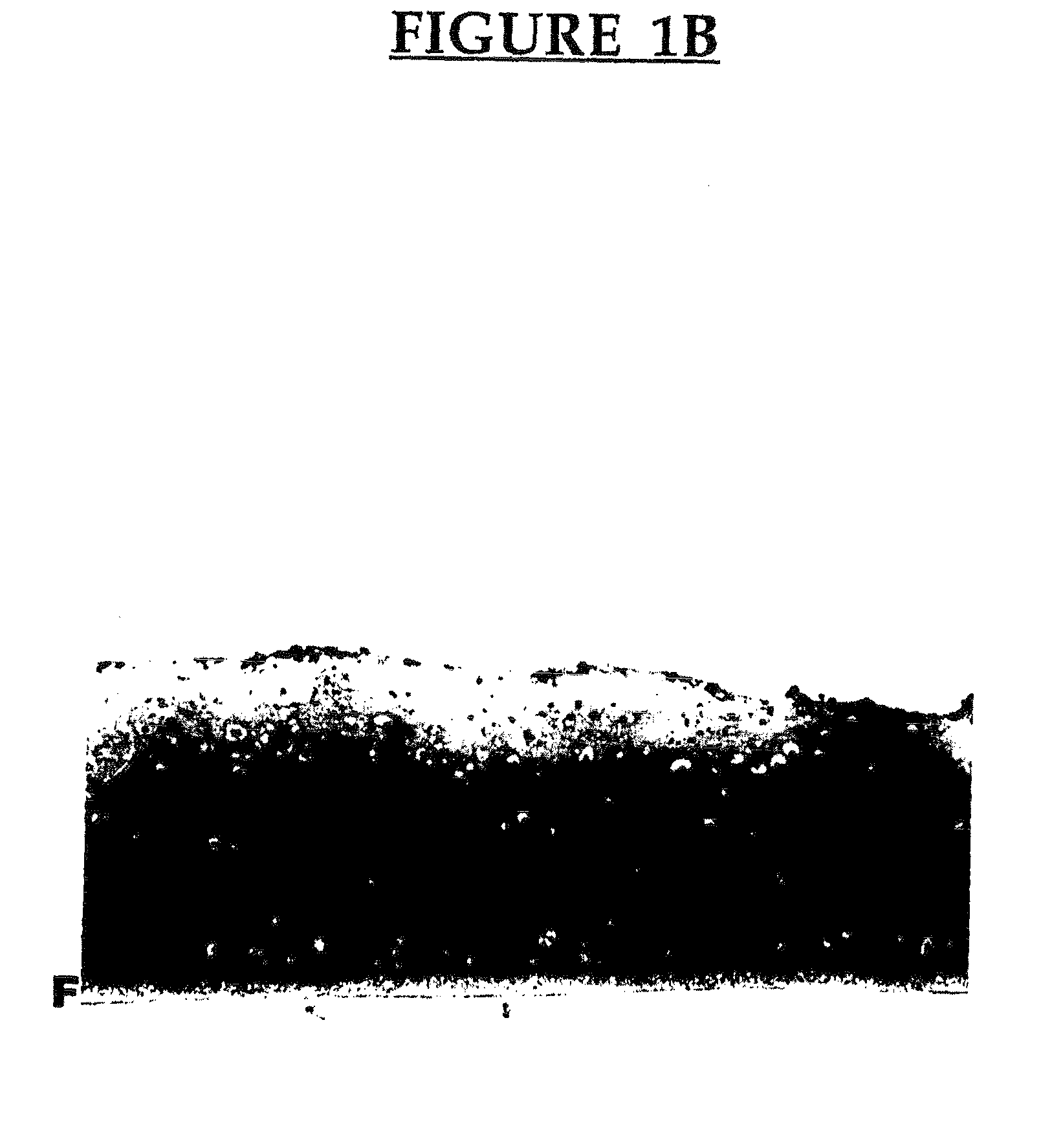Reconstituted mineralized cartilage tissue
a mineralized cartilage and tissue technology, applied in the field of reconstituted mineralized cartilage tissue, can solve the problems of hampered study of the calcified cartilage zone, lack of in vitro culture system, and inability to study the tissue formed by these cells, and achieve the effect of enhancing the healing of a bone fracture in a patien
- Summary
- Abstract
- Description
- Claims
- Application Information
AI Technical Summary
Benefits of technology
Problems solved by technology
Method used
Image
Examples
example 1
Characterization of the Mineralized Chondrocyte Cultures
[0067]Determination of the Enrichment of Chondrocytes from the Deep Zone: As alkaline phosphatase activity is detected in cells at or above the calcified zone of articular cartilage, this enzyme was used as a marker to assess the enrichment of these cultures with cells from the deep cartilage. Cells with an alkaline phosphatase activity of at least 2 μM PNP / hr / 106 cells, which represented at least a fourfold increase in alkaline phosphatase activity when compared to the alkaline phosphatase activity detected in the same number of cells obtained from the entire cartilage (data not shown), were used to establish the cultures. Cells with alkaline phosphatase activity less than this did not mineralize as well or as rapidly. On average the alkaline phosphatase activity of the cells isolated from the deep layer of cartilage was 4.1±0.8 μM PNP / hr / μg DNA (mean±SE). In contrast the alkaline phosphatase activity of cells isolated from th...
example 2
[0082]Chondrocytes from the mid and superficial zones of articular cartilage were cultured on top of the mineralized cartilaginous tissue described above. Chondrocyte cultures are grown in Hams F12 medium containing 20% fetal bovine serum as described above, and after about five days the medium is changed to DMEM with 20% fetal bovine serum supplemented with 10 mM β-glycerophosphate, 100 μg / ml ascorbic acid, and 25 mM Hepes buffer. The cultures are then maintained for six weeks or longer. This results in a reconstituted mineralized cartilage tissue which has a deep mineralized layer and mid and superficial non-mineralized layers substantially similar to articular cartilage tissue in vivo. In particular, FIG. 5 is a photomicrograph of 49 day old culture showing superficial and midzone chondrocytes cultured on cartilaginous tissue formed by the deep cells. Cartilaginous tissue is present and mineral deposits are present in the tissue generated by the deep cells only (Von Kossa stain)....
PUM
| Property | Measurement | Unit |
|---|---|---|
| pore size | aaaaa | aaaaa |
| concentration | aaaaa | aaaaa |
| time | aaaaa | aaaaa |
Abstract
Description
Claims
Application Information
 Login to View More
Login to View More - R&D
- Intellectual Property
- Life Sciences
- Materials
- Tech Scout
- Unparalleled Data Quality
- Higher Quality Content
- 60% Fewer Hallucinations
Browse by: Latest US Patents, China's latest patents, Technical Efficacy Thesaurus, Application Domain, Technology Topic, Popular Technical Reports.
© 2025 PatSnap. All rights reserved.Legal|Privacy policy|Modern Slavery Act Transparency Statement|Sitemap|About US| Contact US: help@patsnap.com



